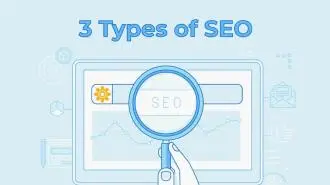It is not enough to learn about SEO practices; you must also know how to implement them.
Ever come up with a clever SEO strategy only to find your site penalised by Google? You might have unknowingly used black hat SEO tactics. These unethical methods aim to unfairly boost website rankings, but they often lead to trouble.
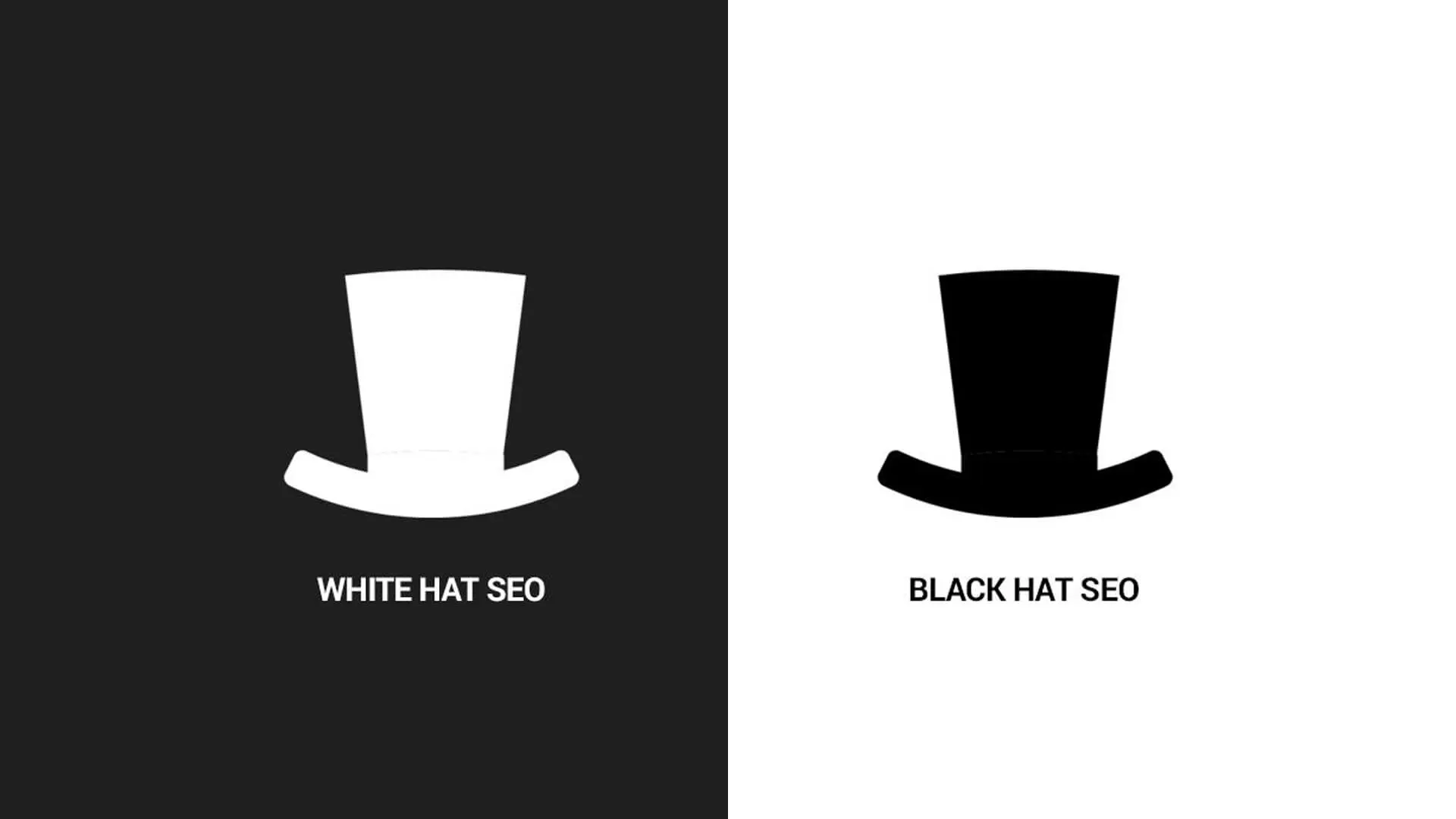
Conversely, you are safe when your website runs smoothly, and consumers find what they want. That means you use white hat SEO to make the content stand out.
But as you can see, the difference between white hat and black hat SEO is not easy to understand. Sometimes, the lines get blurred, and you must struggle between ethical and unethical practices.
So, today, we will discuss all these SEO techniques for your benefit.
Want to receive updates? Sign up to our newsletter
Each time a new blog is posted, you’ll receive a notification, it’s really that simple.
White Hat SEO Vs. Black Hat SEO
White Hat SEO
Like most SEO structures, the main goal is to make the website user-friendly. However, the real difference between black and white hat SEO lies in how they operate.
White hat SEO embraces ethical practices to help optimise web page content. It strictly adheres to the Google Webmaster Guidelines, ensuring the site maintains high standards of integrity and delivers quality content.
White hat SEO makes it easier for search engines, like Google, to find relevant information, increasing the web page’s rank. Usually, a website that employs white hat SEO techniques will be known for its user-friendly design, contextual keywords, fast loading time, and relevant links.
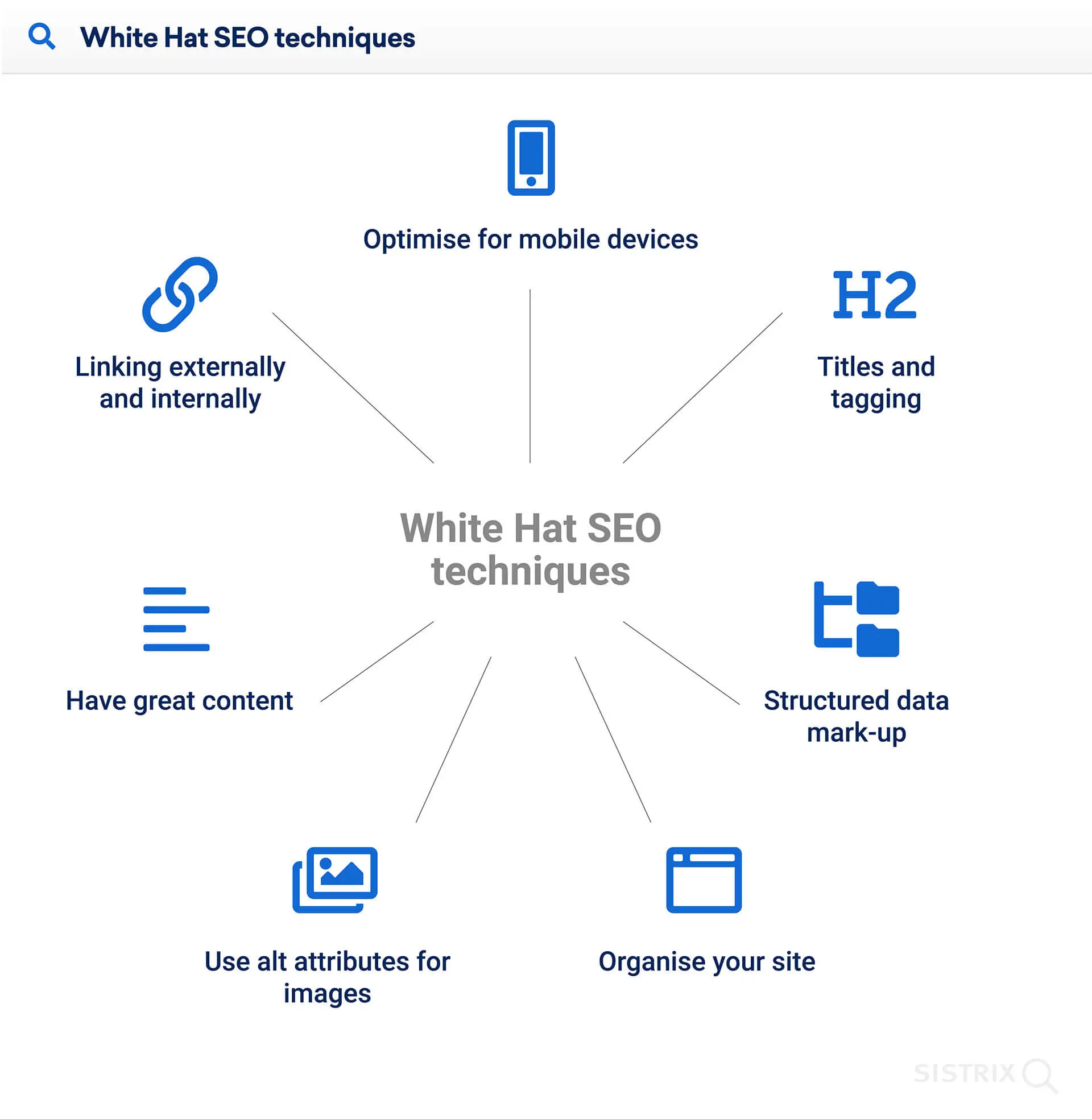
Black Hat SEO
Black hat SEO is not a long-term option, nor does it deliver quality content. It is the opposite of white hat SEO, violating the search engine guidelines to dupe the Google Search engine.
The primary objective is to ensure that the site features higher search engine rankings by using any method possible. For instance, the most common proponents of black hat SEO are virus creators, hackers, and individuals engaging in unethical practices.
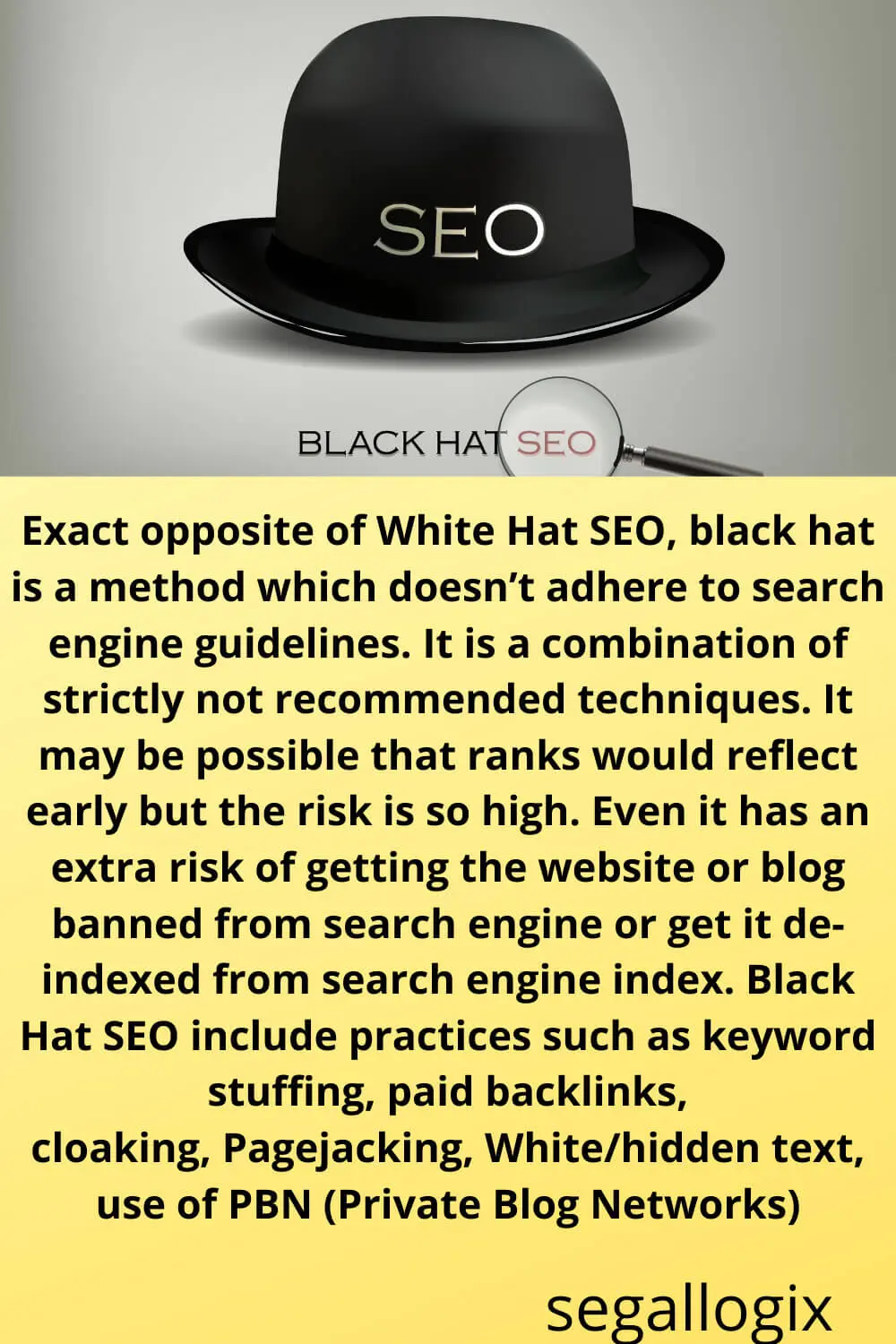
Principles Of White Hat SEO
In the debate between white hat vs. black hat SEO, discussing the crucial aspects of these two SEO strategies is essential. So, for better understanding, you can note the points related to white hat SEO mentioned below.
1. Search Engine Guidelines
White hat SEO involves meticulous planning and research to follow Google Search engine guidelines. Any website can view these rules to understand what constitutes unethical practices.
Simply put, all websites should avoid tricks that could mess with their search engine results. If a site tries to mislead Google’s algorithm to boost rankings, it’ll likely face penalties.
But even more severe is that people might lose their trust, which could affect the search engine’s reputation.
2. Believes In Long-Term Goals
A site that uses white hat techniques has more chances to create a user-friendly experience. It positively impacts users while their intensive methods prove helpful for link-building and improving SEO tactics.
Speaking of intensive, it delivers long-lasting results, but occasionally, the website may take time to load. You must adapt your SEO practices to reduce the wait time for different pages to ensure this does not happen.
Also, from the point of view of the website owner, white hat SEO will achieve steady rankings, keeping the web page from falling down the ladder. In addition, you can use all target keywords to ensure that the search results remain relevant even after several years.
3. User Experience
By investing in relevant content, website managers can ensure the site receives more traffic and benefits people.
The main goal of search engine optimisation (SEO) is to provide the human audience with content that will satisfy their demands. It would be best to improve SEO architecture by researching users’ behaviour to find which content or keyword generates more hits.
Ethical SEO makes it easy for search engines to relate the content to search results. Long story short, users get value for spending time on the website, and you do not have to worry about the consequences of violating Google’s guidelines.
Also, ask the SEO experts to make the web page easily navigable to appeal to users of all ages.
Principles Of Black Hat SEO
Having learned about white hat SEO techniques, it’s time to look at the principles of black hat SEO.
1. Manipulative
No one appreciates manipulation, particularly when they’re searching for key information online. For example, being tricked into actions serving someone else’s selfish interests wouldn’t sit well, right?
Similarly, the black hat SEO technique does not care about user experience but focuses on outwitting Google’s algorithm to rank higher. In short, it uses deception to trick Google’s search engine into thinking that the web page features relevant content.
While this may attract users initially, they will likely find that the content does not uphold quality standards.
2. Focuses On Shortcuts
In the white hat vs. black hat SEO debate, one of the arguments against the latter is that it uses shortcuts to get the desired results. Rather than improving the website’s quality, black hat SEO techniques try to exploit the loopholes in Google’s algorithm.
Such SEO tactics may increase the rankings, but users are unlikely to find the search results relevant to their needs. Long story short, it may lead to temporary gains, but the breakthrough is always short-lived.
Like us, Google is also aware of unethical SEO tactics and keeps changing the algorithm to filter out perpetrators. It helps ensure that users find relevant answers to their queries, which is essential for Google’s reputation.
3. Violates Google’s Guidelines
The above section clarifies that websites using black hat SEO blatantly violate Google’s guidelines. Naturally, these websites risk being penalised and losing their rankings if the new algorithm catches on.
More importantly, once people realise that a website uses black hat SEO tactics, they can report it as spam. Hence, it alerts the search engine and prevents users from logging into the site.
How To Identify A Black Hat SEO?
Now that you’re aware of the pitfalls of black hat SEO, you might be curious about spotting a dodgy site. From our experience, there are clear signs that suggest foul play.
1. Keyword Stuffing
Let’s dive into keyword stuffing, a sneaky tactic black hat SEOs use to boost rankings. These sites often repeat targeted keywords endlessly and out of context.
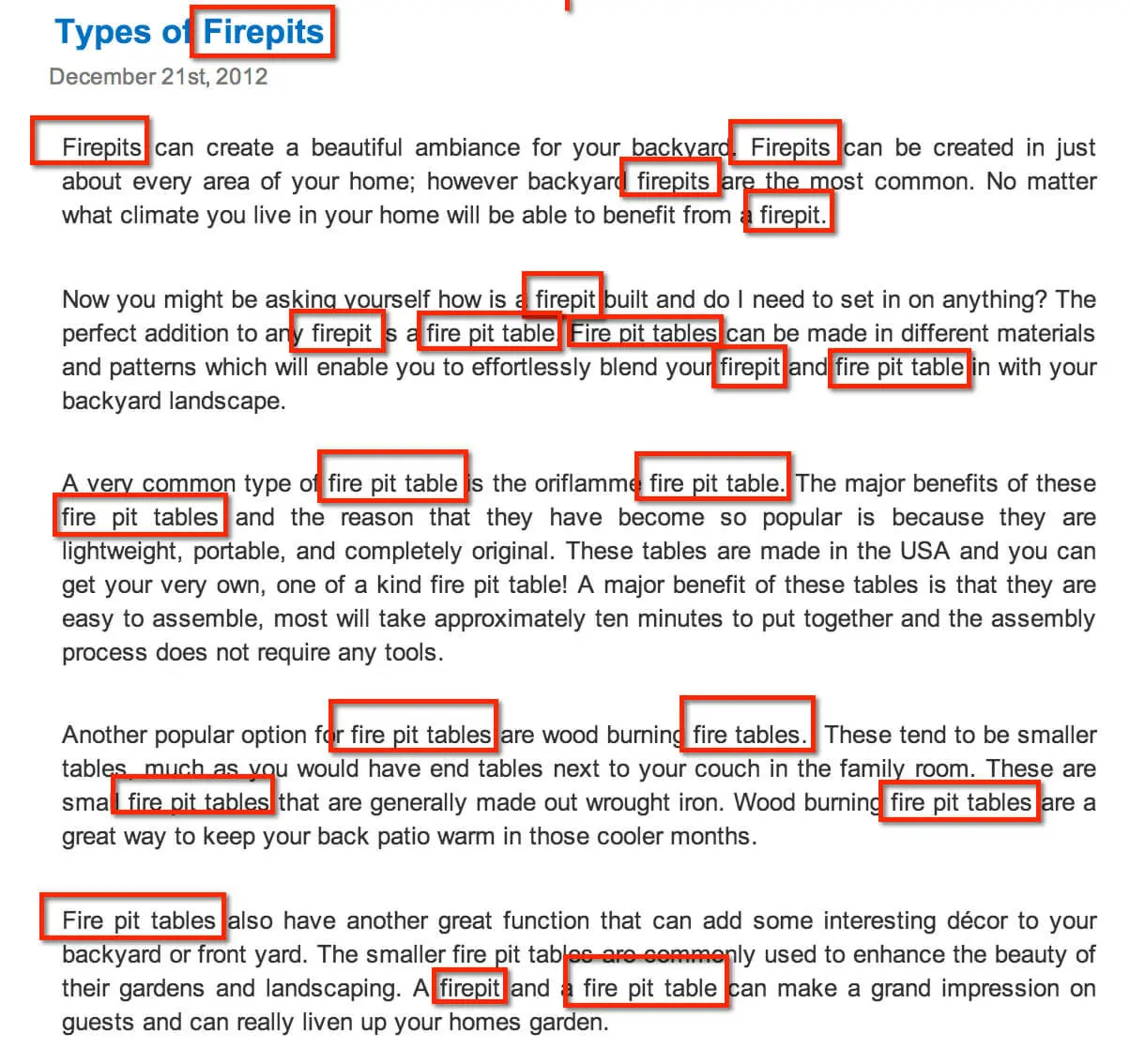
You need to read the content thoroughly to ascertain if it makes sense. In simple terms, these websites fail to deliver quality content because they are more focused on ranking.
Luckily, most modern algorithms can flag a website as they know how to detect keyword stuffing.
2. Link Scheme
Next, we will discuss link schemes known as manipulative linking. It is one of the most common black hat SEO propagator’s tactics using hidden links across the web page.
In some cases, these websites may physically hide the keywords by matching the colour of the text to the background shade. And, when users click on the keywords, it leads to mutual backlinking.
Usually, the purpose of a link is to direct site visitors to another website with relevant content, which helps improve the ranking. But rather than adding helpful links, black hat SEO websites use irrelevant links with no value.
So, something might be fishy if you come across any such links or find keywords written in smaller fonts.
3. Hidden Text
Like hidden links, black hat SEO proponents colour specific texts to blend with the website’s background design. This makes the particular word or link invisible to users, which means you might not find the content irrelevant.
It also helps sneak in more keywords and links that search engines may find helpful to answer a query. Another malicious strategy is to reduce the font size of specific texts, maybe even to zero.
But the good news is that Google crawlers know these black hat techniques, increasing their chances of catching them.
Grey Hat SEO
Another category between white hat SEO and black hat SEO is grey SEO. As the name suggests, defining what these SEO strategies entail could be good, bad, or both.
You should know that Google recognises it as an SEO practice, but its terms and conditions are unclear. Additionally, the website may still occupy a higher ranking position due to overlapping areas between black and white hat techniques.
In a different context, users might report it as spam. So, how will you identify grey SEO strategies? We have mentioned two points below to help you.
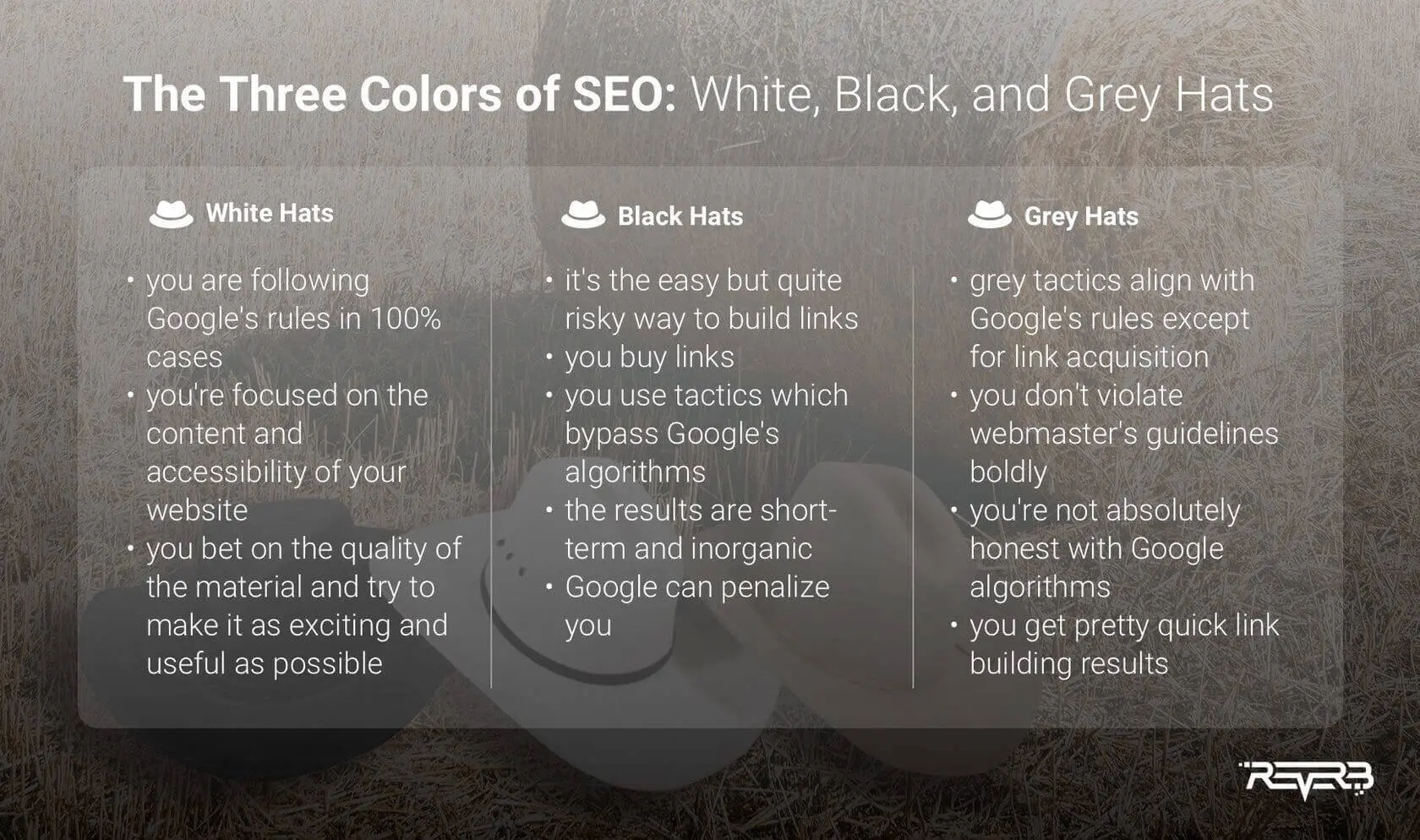
1. Lack Of Transparency
A simple way to describe grey SEO is how search engines respond to the website. It could be right or wrong depending on the search engines’ changing guidelines.
You can practice grey SEO strategies if you do not push the boundaries of black hat techniques. It would be best to weigh on the side of caution and provide people with quality content, which should be the priority.
At this point, a famous saying comes to mind: no risk, no gain. Some prefer using grey SEO tactics and run the risk of being penalised. Others prefer to play it safe and improve their SEO architecture to serve customers.
2. No Clear Guidelines
Further adding to the blurriness is the lack of guidelines on what Google might or might not allow. We suggest reading the norms and regulations of ethical SEO practices, ensuring that search engines do not flag your website.
Also, whenever in doubt, ask yourself if you would reveal the SEO strategy to Google. If the answer is no, it might be best to change your SEO tactics.
The Difference Between SEO Practices
That’s all there is to know about black hat SEO, white hat SEO, and grey SEO techniques. Hopefully, now you can steer clear of black hat SEO practices and take your web page to the top of the rankings.
On that note, we’ll conclude our guide. Until next time!



